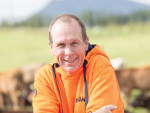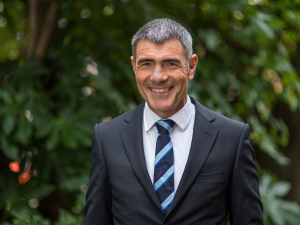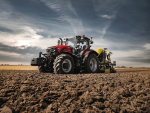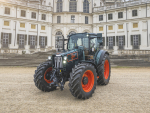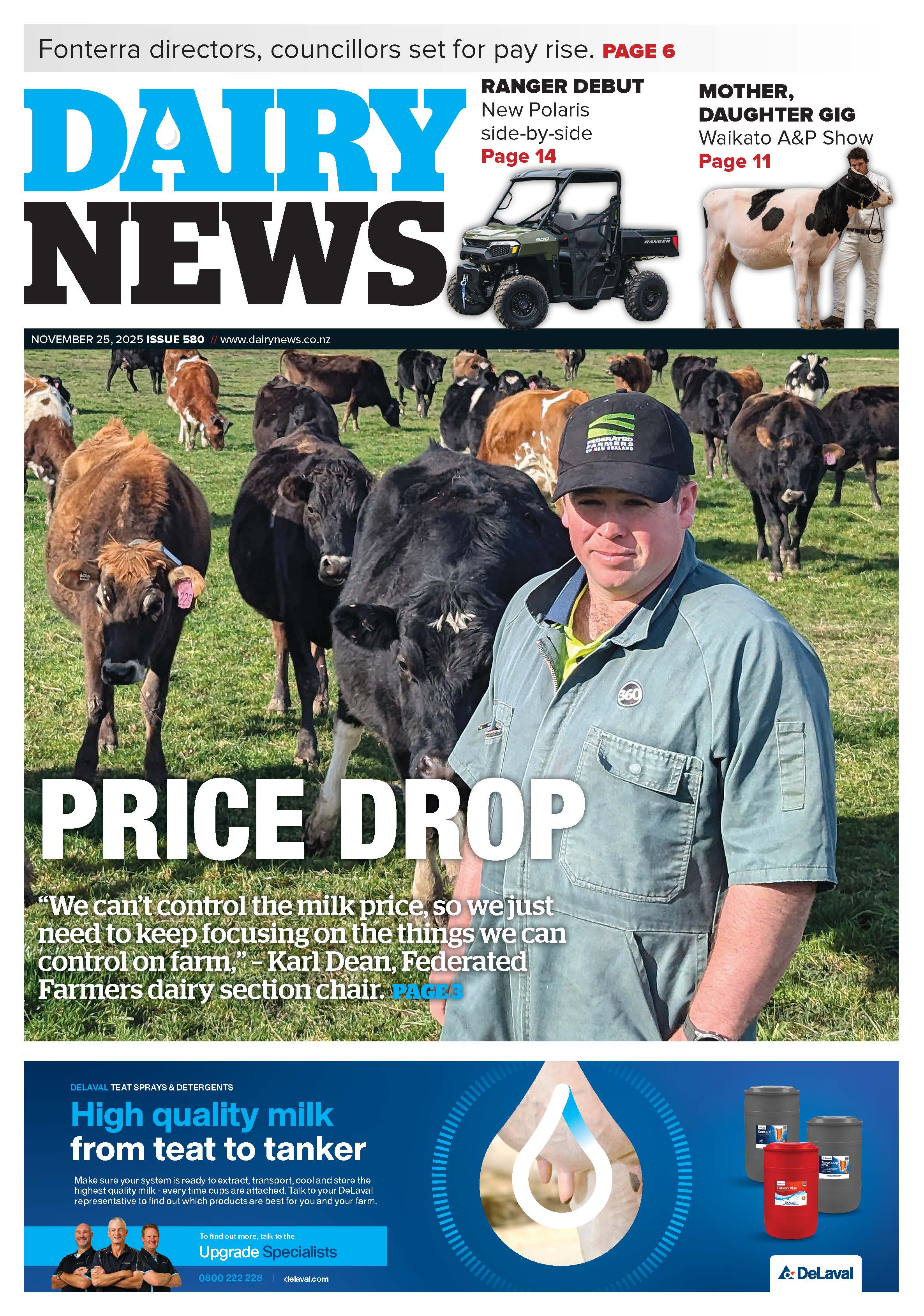Major steps are underway to improve the quality of dairy beef calves.
It’s all happening at Pāmu’s, or Landcorp’s, Goudies Station southeast of Reporoa in the central North Island.
The objective of the research being done there is to produce a sire to meet the requirements of the dairy farmer – a calf with a short gestation period and easy calving – but also the needs of calf rearers, finishers and right through the beef value chain.
Goudies Station is unusual and complex. It’s a long narrow farm – 1779 hectares effective and 18 km long and among other things acts as a firebreak between Timberlands forests. It’s a serious drive from one end of the farm to the other, but the laneways are good, the land is flat and travel is easy. The soil is light pumice but rainfall and heavy overnight dews make for good grass growth.
It’s a breeding operation and on the beef side the team at Goudies works closely with Focus Genetics and LIC. The farm has a nationally recognised Romney ram breeding operation and 1400 hinds are also run on the property.
This is quite a handful for manager Tim Bowron, a career farmer raised on a sheep and beef farm near Taupō. He’s managed Goudies for seven years now and has six permanent staff and other contractors to help run the property. Daily they deal with important and complex tasks on farm and interact with outside organisations which have an interest in the Goudies breeding programmes.
But it’s the beef breeding work that’s turning heads in the dairy and beef sectors, as the heat is on to utilise what was often seen as an unwanted by-product of the dairy industry – the bobby calf. Slaughtering bobby calves is seen internationally as a negative and a waste. One of the problems has been the variability of the calves produced by dairy farmers – other than those used as replacements.
Read More
The work at Goudies is geared to producing a high-quality sire to go over the cows that farmers don’t want to keep a replacement heifer from. The goal is to get a consistently saleable, fast-growing, quality calf that will give a high return and can probably be ready for slaughter in 18 months.
The answer is simply silver. Well actually, Silver Stabilizer, which is the name given to the special sires that have been bred here since the programme began 18 months ago. Tim Bowron says the Silver Stabilizer is the marker gene that can easily be identified by the dairy industry indicating short gestation, low birthweight and high performance.
“This is all very new. We are running 350 Silver Stabilizer cows and these are a combination of the Simmental, Red Angus and Gelbvieh. The latter is a cattle breed originating in Germany and is primarily used for beef production. These are crossed with a Charolais and what we are getting is a silver-coloured calf which is an easier identifier when mated over dairy cows,” says Bowron.
Producing A Winner
The race is now on at Goudies to speed up the programme to get the genetic gain that they believe is possible.
Tim Bowron says it’s not only about producing the perfect calf but having the hard data to back this up and being able to convince all those in the dairy beef value chain that they are on a winner.
“We expect this programme to run for another three or four years because we want to conclusively prove it works internally before we express this in the commercial world – both in dairy and beef farms,” he says.
The other part of the equation is of course the type/ breed of dairy cows that the Silver Stabilizer will be put over. For several years, the kiwi cross has been the choice of many dairy farmers. But Bowron says Pāmu moved away from this some years ago and is putting more Friesian into the mix. He points out that the Friesian adds more size and also reduces the amount of yellow fat from Jerseys.
“The goal is to produce from those dairy cows, from which a replacement is not kept, a consistent and saleable beef animal that is at least as good as, if not better than, the traditional beef animal and at the same time go some way to solving the bobby calf problem. That will be the gold standard,” he says.







